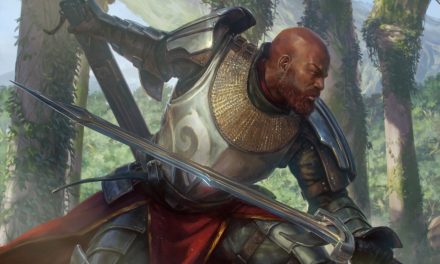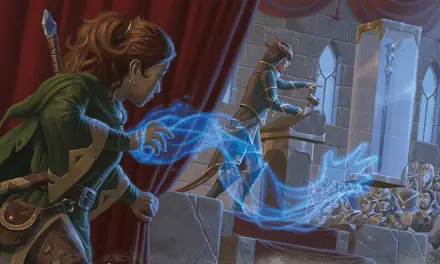The Character Background mechanic is one of my personal favorite additions to D&D 5e. It’s a way to better tell where your character came from before becoming an adventurer.
You may choose a character background that is more traditional for your chosen class. Options such as the Criminal background for a Rogue or the Soldier background for a Fighter make sense and give you bonuses that are appropriate to such a background.
But the world is a vast and open place that is full of surprises and experiences.
Your Wizard may have the Urchin background and learned magic by apprenticing for another Wizard who took your character in. You may play a Druid who escaped to nature after growing tired of the Noble upbringing in their background.
Having a Character Background add a level of depth to your game. Because characters are coming into the adventure with experiences, connections, and a certain place in the world, it makes them more believable.
So let’s talk about Character Background in D&D 5e.
Becoming an Adventurer
The life of an adventurer is not for everyone. Very few are cut out for the hard life of braving dungeons and staring down vicious monsters. Your background explains who your character was before becoming an adventurer.
As they join the party and go on their journey, the skills and experiences of their past are a significant part of shaping who your character is.
Each option for your character background also includes suggestions for Personality Traits, Ideals, Bonds, and Flaws. These help you establish your character and inform your roleplaying.
Personality Traits
Personality traits explain your character’s behavior. When creating your character, you choose two traits for your character.
They may be quick with a joke or prefer to be strong and stoic. Do they have a tendency to get lost in their own thoughts? Perhaps they have a tendency to flatter others when speaking.
Ideals
Ideals are your character’s personal philosophy. It’s what they believe and at the core of why they do the things that they do.
Someone with the Criminal character background may not necessarily be a “bad” person. They may be a Robin Hood type character who uses their talents to steal from the rich and give to the poor. While they are still a criminal, the character’s ideal of helping the poor adds reason to their actions.
Ideals particularly play to the character’s alignment. Some ideals may favor lawfulness whereas others may favor a free-willed and chaotic philosophy. Some may be more fitting of a good-aligned character where others may be better suited to an evil character.
Having an idea of your character’s alignment can make choosing a bond easier!
Bonds
Your character’s bond is what connects them to the world around them.
This is where the character really becomes a part of the story due to their connections with the people, places, and things around them.
Because your character’s bond is such a deep part of them, these function similar to ideals.
A character’s may find that their family is their bond and will always place their family’s well-being over anything else. It’s fully possible that this may even be to the character’s own detriment at times.
A craftsman’s bond may be their guild. Without the guild’s help, they wouldn’t have developed the skills that made them who they are today. As such, this character is happy to share trade knowledge acquired in their travels with their guild back home.
Flaws
Like it or not, we all have our flaws. Characters in D&D are no exception!
The Bard may be a skilled entertainer but has a tendency to get carried away with wine and ale. The Wizard is remarkably intelligent, but perhaps they don’t realize that their lectures come across as arrogant or condescending to others.
Flaws, in my opinion, are where some of the best roleplaying can be found.
Mechanics of Your Character Background in D&D 5e
Each character background option gives you two skill proficiencies that are relevant to that background. Additionally, your chosen character background gives you proficiency in certain tools such as disguise kits, musical instruments, or artisan’s tools.
For example, a character with the Noble background gains proficiency in History and Persuasion. As a Noble, the character would be well-versed in knowing important names and events as well as conducting themselves in a persuasive and eloquent manner.
A character with the Urchin background, however, gets proficiency in Stealth and Sleight of Hand. As they have likely been forced to pick pockets or steal to survive, even an Urchin who is not a Rogue would be proficient in these skills because of their character background.
If your chosen character background gives you a proficiency that you would already have from a different source, you are able to swap it out for a different proficiency. A skill proficiency can be swapped for proficiency in another skill and a tool proficiency can be swapped for proficiency in another tool.
But there’s even more benefits!
You character background may also give you access to speaking new languages. Each background option gives special roleplaying abilities such as the Folk Hero’s ability to find shelter among common folk easily or the Sailor’s ability to easily secure passage on ships in exchange for helping the crew.
Lastly, each background gives starting equipment to help you get up and rolling quickly.
Character Background Options
In the Player’s Handbook, there are 13 character background options. Modules will often have additional character backgrounds to help character’s fit the theme of the adventure, but these can also be used outside of that module.
For example, the jungle-trekking and ancient-tomb-busting adventure of Tomb of Annihilation includes a background option for an Archaeologist (because who wouldn’t want to play as Indiana Jones?!). Meanwhile, the gothic horror of Curse of Strahd includes the Haunted One character background to help make a character fitting with the dreadful environment of Barovia.
Each background has tables for Personality Traits, Specialties, and more. You can choose if you’d like to roll on these tables or just pick whichever ones sound like the best fit for your character!
But beyond these, you are entirely free to come up with your own character background. Working with your Dungeon Master, it is possible to create a background that is uniquely suited to make exactly the type of character that you would like!
Whether you’re looking to create an entirely new background or just tweak an existing option, the ability to be creative and customize your character is part of what makes Dungeons & Dragons such a fantastic game.
The Character Background Mechanic in Action
So let’s put it all together and see how the character background mechanic works.
We’ll make a Gnome Wizard named Dimble Wildwander.
Making Dimble Wildwander
Dimble will be using the Sage character background option on pages 137-138 of the Player’s Handbook. This means that he will be getting proficiency in Arcana and History, an additional two languages, and his starting kit.
For fun, we’ll roll on each of the background’s tables starting with Dimble’s speciality.
Rolling a 5, it turns out that Dimble is a professor!
So we’ll roll for his personality traits now. With a 3 and a 7, we learn Dimble’s personality traits are that he is used to patiently explaining things to others and that he is horribly awkward in social situations.
I’m already seeing a type of scatterbrained academic character forming. Perhaps someone who mistakenly assumes that everyone is just as interested in his area of study as he is?
Anyhow, now we roll for his Ideal and get a 1. Dimble’s Ideal on the table is that he believes knowledge is the path to power and self-improvement. Pretty fitting for a professor!
We roll on the Bond table next and get a 4. Dimble’s connection into the world is that he has written a series of tomes based on his specific area of study. We can see why this may prompt him to leave the Academy and become an adventurer as he wishes to publish more of his findings from out in the world.
Lastly, we roll to find Dimble’s flaw and get a 6. As it turns out, Dimble is terrible at keeping secrets and has a bad habit of blabbing.
So we’ve now determined a TON of information about Professor Dimble Wildwander. Let’s put it all together and see exactly what kind of character we get.
Putting the Pieces Together
Dimble Wildwander is a professor at a reasonably-respected Arcane Academy. Despite teaching a difficult subject at the Academy, his students all know him to be a patient and caring instructor. He’s the type who might silently point out the correct answer on an exam to a struggling student.
However, Dimble seems to have difficulty talking about anything outside of his expertise. He’s written a large selection of books about this subject and has a tendency to turn any conversation into one about lore and theories he’s researching.
As nice as he may be, he doesn’t get invited to many parties…
There was one specific incident at the last faculty party that he was invited to several years ago. One of the other faculty, Professor Balasar Norixius of the Draconic Studies department, confided in Dimble that he had acquired an ancient (and banned) book on Draconic Magic.
Dimble was particularly excited to read the book and couldn’t help but share why he was acting so giddy. Within a week, the entire Academy knew that Professor Norixius was in possession of the banned tome.
The book was confiscated by the Headmaster of the Academy and Professor Norixius was let go. As he walked out of the Academy for the last time, he sneered at Dimble.
As thanks for calling attention to Professor Norixius’s possession of such a dangerous tome, the Headmaster gave Dimble a letter from another professor who had died years ago under mysterious circumstances. The Headmaster believes that Dimble’s research may be the key to determining the death of his colleague and the discoveries that led to it.
For the opportunity to help the Academy and unlock a great mystery in his field, Dimble prepares to leave the classroom and become an adventurer.
He packs plenty of writing materials, the letter he received from the Headmaster, and some other equipment. As Dimble goes to leave the Academy, the Headmaster reassures him that he is a welcome guest in any of the Academy’s libraries throughout the realm.
Character Background Conclusion
We got so much extra information from the character background that planted the seeds for a unique character. With a little creativity, Dimble now has a rival who may reappear in the story and connections through the Academy.
Backgrounds are a very useful tool in crafting a character that can truly interact with the world that your game is creating. While they are becoming adventurers, the skills that they’ve developed from their past will have great effects as the story continues.









